
So BookCon was, like the very first New York Comic-Con, a raging success that caught everyone by surprise. It may be surprising that so many thought the idea of putting some of the world’s most loved authors in front of an audience would be a questionable venture, but whatever the doubts, it worked. Ticket sales were “limited” to 10,000 and I think they all showed up at once at 9 am on Saturday morning.
I got to the Javits Center about 11 am, and people were already complaining about the lines and disorganization — apparently the entrance queue filled the entire downstairs hall, and the fire marshal shut things down at one point. I managed to get into the Stan Lee panel by flashing my Publishers Weekly badge, but when I left around noon, the entire area to get into the Hall E panels was cut off and no one could get into the staging area any more.
If it was a scene reminiscent of the first NYCC where state trooper has to shut things down and Dan Didio, Frank Miller and Kevin Smith all got locked out of their booths, it was reminiscent in another way: the people who attended were there because they has a passionate connection with the material and the people who created it.
The halls were jammed and bustling with excitement. Some of the comics publishers who were there complained that they hadn’t been fully briefed about what was going to happen and didn’t have enough material to sell. Another said they sold out by 11:30 am. For con-hard veterans this was a walk in the park.
The most amazing moment came when I went to the “Special Events Hall” at the Javits—the equivalent of Hall H—to see the Blockbuster Reads panel with James Patterson, Daniel “Lemony Snicket” Handler, Rachel Renee Russell and Rick Riordan interviewed by Jeff Kinney. The room was packed, and there was an electricity in the air as the event approached, completely similar to the feeling in Hall H. When the authors came out they were greeted by screams and every time a book was mentioned there was more cheering. The attendees were sitting reading books, reading Kindles, writing reports.
I loved it. I didn’t find this a great experience because it was shifting the veneer of celebrity to authors, but because there was clearly such a strong engagement with readers who loved the books these people had created. I didn’t stick around for John Green, but apparently that was even more fervent.
And a word about that audience: according to one exhibitor I talked to it was 10-to-1 girls and women. “This is YA con,” author Scott Westerberg told me. And that’s exactly what it was, showing that the audience for stories told in book form is is still there as of 2014, despite all the gloomy predictions.
The show was not without other problems, as enumerated in a Vulture story by Boris Kachka
It was a good thing because, as McDonald says, “it was hairy today with ten. Believe me, we have a lot of work to do for next year.” Fans took their cues from shows like Comic Con, lining up so early for panels that organizers quickly lost control. By 10:45 a.m., the lower level was cordoned off. From the escalators above, the group waiting to see Stan Lee looked like a refugee camp. McDonald regrets front-loading most of the big stars and putting them in too-small conference rooms. “You want to fire the cannon right away,” he says, “but maybe next year there’ll be a little more staggering.”
Things eased up later in the day, but in front of the main events hall — host to Amy Poehler and Martin Short, followed by a slate of blockbuster children’s authors and the biggest draw, The Fault in Our Stars author John Green — the line turned into a roped-off swarm. Screaming teenage girls knocked over a barricade. Parents crowd-surfed out while the children remained. “It’s got to improve,” says McDonald. “But who wants to keep doing the same thing and not get better at it?”
As with the first NYCC, I think the ReedPOP folks picked up on industry misgivings about the enterprise, and perhaps underestimated the excitement. As a couple of people told me, the event was a success in spite of itself.
But, to be fair, nothing quite like it had ever been done before. There are book fairs which tend to focus on literary books, and comics, SF, Horror and Romance events which focus on certain genres. BookCon was aimed squarely at the most popular and populist area of the book world.
PW has the inside story on the machinations between the publishing world and BookCon, which will go to four days next year:
Prior to the show, publishers were concerned about the about the “gear shift of “publishers looking forward to the fall while the aspect for consumers is now,” as Liz Psaltis, director of marketing for Gallery Books and Pocket Books put it. But Psaltis, echoing the sentiments of others, was elated to be experiencing a real opportunity to “hand sell books and talk directly to readers.” Ellie Berger, president of the Scholastic trade division, was happy with the initial BookCon, but said Scholastic will make changes for the 2015 event. “Next year we’ll be more strategic, based on the experience today. There are more kids, librarians, and educators today than the last two days, a very different crowd that we’re glad to see,” Berger said. With so many young women in attendance, Harlequin had a busy BookCon. “It’s fantastic. This is a great way for our fans to meet our authors, and we brought 12 authors today, from romance to teen novels. It’s very different today, with more of a buzz about the books that’s so contagious. I’ve never seen anything like this before. It’s inspiring to see how passionate the young readers are.” said Harlequin’s Michelle Renaud. Little, Brown gave away 500 copies of Michael Kortya’s The Prophet, to fans. “It’s been great to engage with readers directly. We really feel like booksellers, handselling,” said Miriam Parker, online marketing director for Little, Brown.
Most traditional publishers would rather walk barefoot over leprous vipers than face their customers. Once again, to be fair, their view may be colored by the fact that at BEAs most of the “power readers” tended to be older and extremely….eccentric. The younger, crowd that actually attended BookCon was a far cry from Power Reader day, and rather than being a dreaded chore, filled you with hope for the future of reading.
But given the long argument about opening BEA to the public, I think it’s fair to say that publishers will have to be dragged kicking and screaming into this world. But it will happen. I made a little video of the two sides of the show on Saturday:
Which side are you on?
Some more photos:
I’m sure Torsten will have full coverage of this, but the LONE Starbucks at the Javits has now been converted from a kiosk to a built in, and the former kiosk area is now a carpeted seating area. Still looooong lines though.
Print Ninja was just one of MANY companies that were there to offer author services and try to service te growing self-publishing and crowdfunding areas.
This is the poster that Scholastic offered for Sisters, which has a 200,000 print run.
ALERT CHRIS SIMS!!!!
Lerner Books was promoting Three-Story Books: Birdcatdog by Lee Nordling and MEritxell Bosch, an innovative kids book that tells three interactive stories. It’s one of a growing number of books that are playing with the form in very sophisticated form.
Want
Carol Burrell of Abrams and librarian Karen Green beneath the eyes of Wimpy Kid.
Blockbuster Reads with Jeff Kinney, Rick Riordan, Rachel Renee Russell, Robert Patterson and Daniel Handler.
Illustrator Bob Staake signing!
This was the scene in Hall E outside the panel rooms. Soon after the Fire Marshal didn’t allow any more people into the area. This is a similar situation to what happens at NYCC nearly every year, and it needs to be carefully addressed.
This was the real dark side of BookCon, incredibly long lines for he ladies room. This one was about forty people. I even tried using my go-to-secret piddle bathroom, and there were 50 people who also know about my secret goto piddle bathroom. At one point they literally turned a men’s room into a ladies room to accommodate the line.
Once you finally did get into the bathroom this darkly genius promo greeted you on every stall. I got two post apocalyptic words for you: night soil.
One last gri,




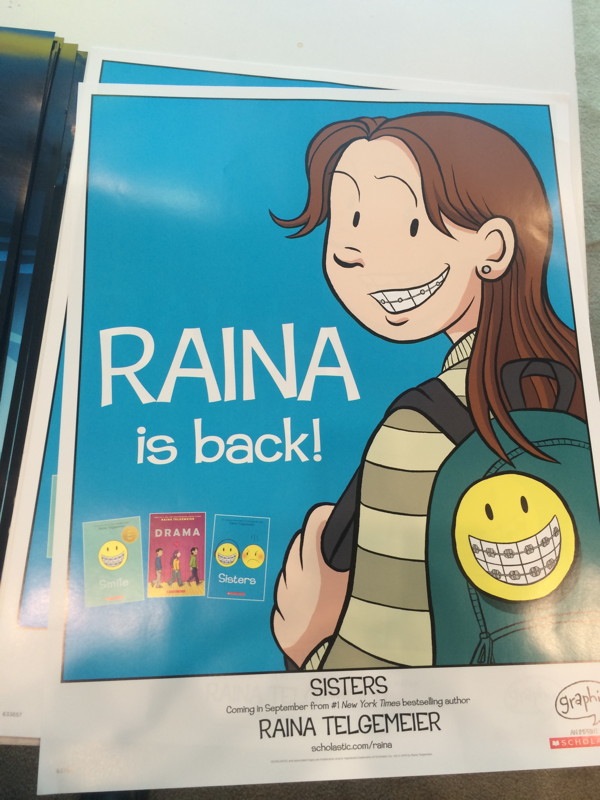
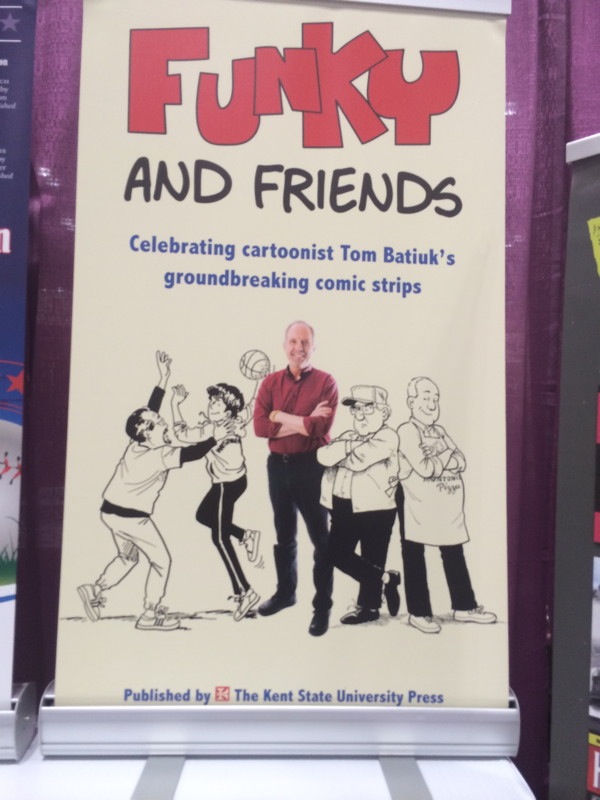



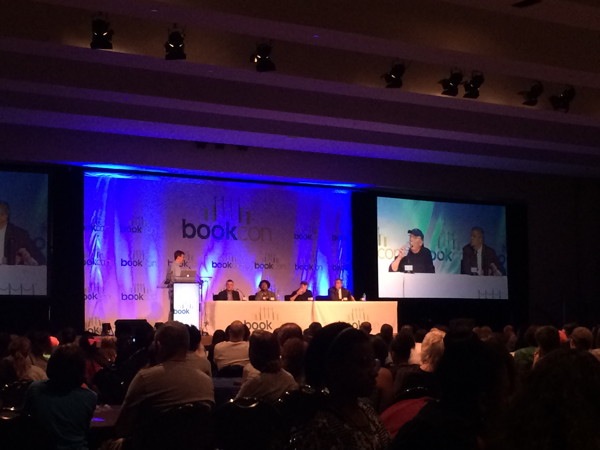
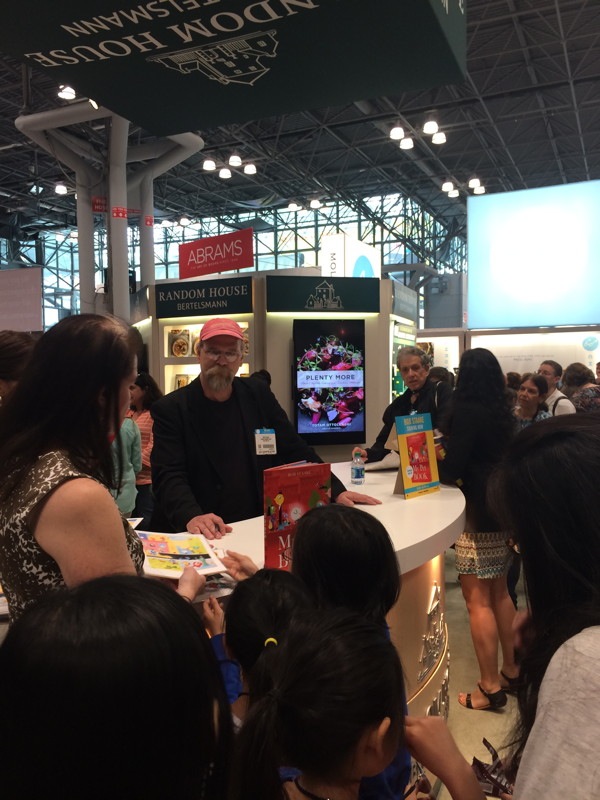
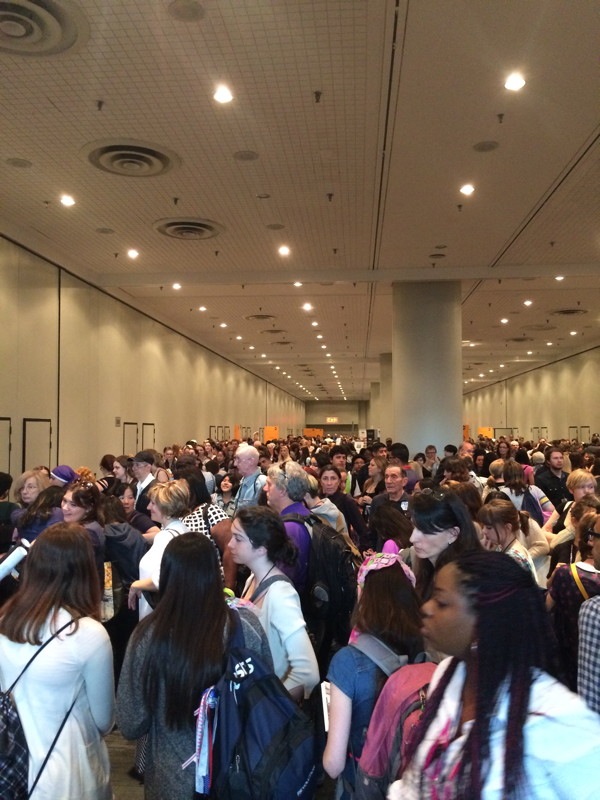
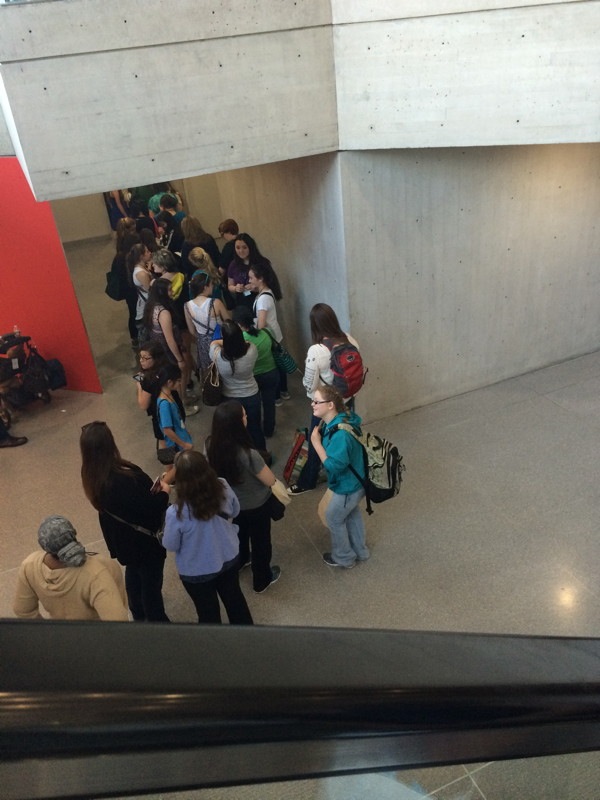
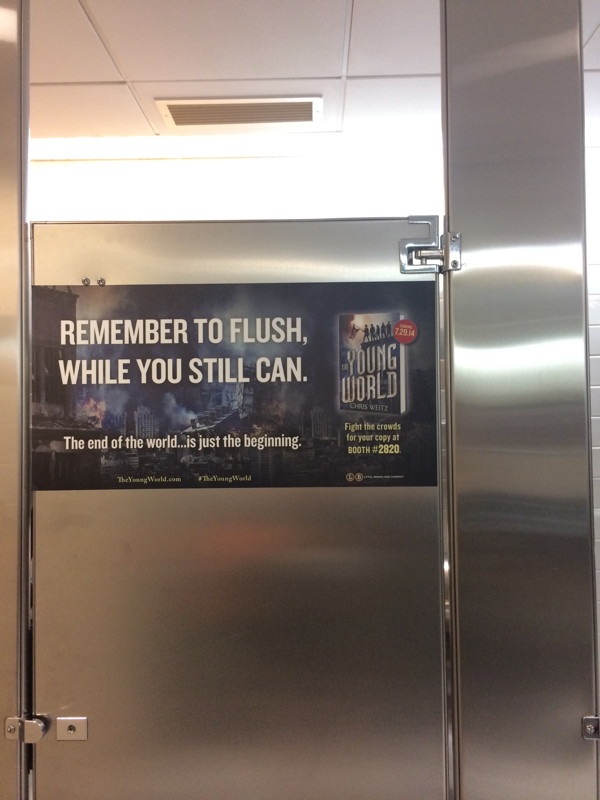
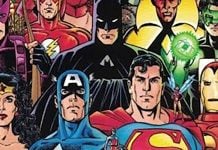
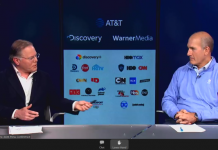
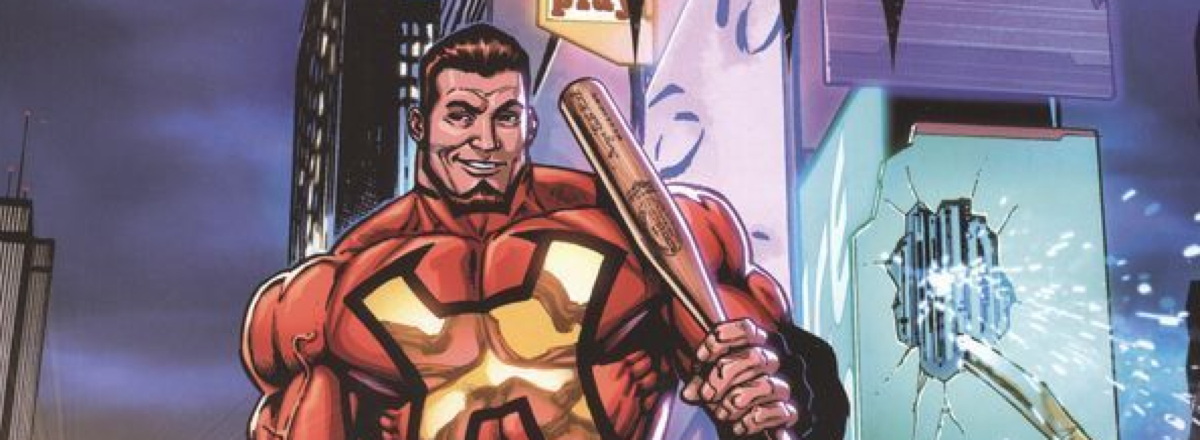



The crowds were really impressive. I was on a “The Graphic Novel Today” panel at 10 AM, with Calista Brill, Raina Telgemeier, and Calvin Reid, and–despite the presence of blockbuster Raina–I didn’t expect much of a turnout at such an early hour. But our Hall E room was SRO, which means, what, about 200+ people? It was stunning!
Wonderful. Kudos to all involved for having the insight and courage to make this happen!
“But, to be fair, nothing quite like it had ever been done before. ”
The Texas Library Association has a teen day as part of their conferences. Librarians can invite five readers to participate. This year, they have their own parallel conference, and get three hours on the show floor.
Also, what about Miami and other book festivals?
I’m glad a lot of people had fun there. I didn’t. I don’t know if advertising guests for BookCon and then putting them in areas of that people who paid to get into BookCon can’t enter counts as “disorganized,” but my five-year old daughter was more than disappointed she couldn’t see her favorite actress from the Fresh Beat Band for that reason. That turned what was going to be a full day of fun at a con to a quick exit and a trip elsewhere.
I do also want to point out that a lot of people didn’t have fun at all. Its great that so many people showed up for the panels – no kidding – these are very popular authors in a con in a huge city. No one thought they would easily get 200 people to show up? Then they weren’t thinking too clearly. And there were many, many people there who thought that this was an open event. I saw quite a few folks who got to “the wall” which was the dividing line between what the public could attend and what “professionals” in the industry could get into and when they were turned away by security guards they were pissed off. I was one of them. How dare you advertise certain authors and then put them in the area that is not accessible to the public? And if it is a “chore” for publishers to actually talk to the people who buy their product perhaps they should go out of business. So nice that all of the book store owners and librarians had full range to the whole floor but here is a clue – it is the general public that will make or break a store or a book.
Comments are closed.